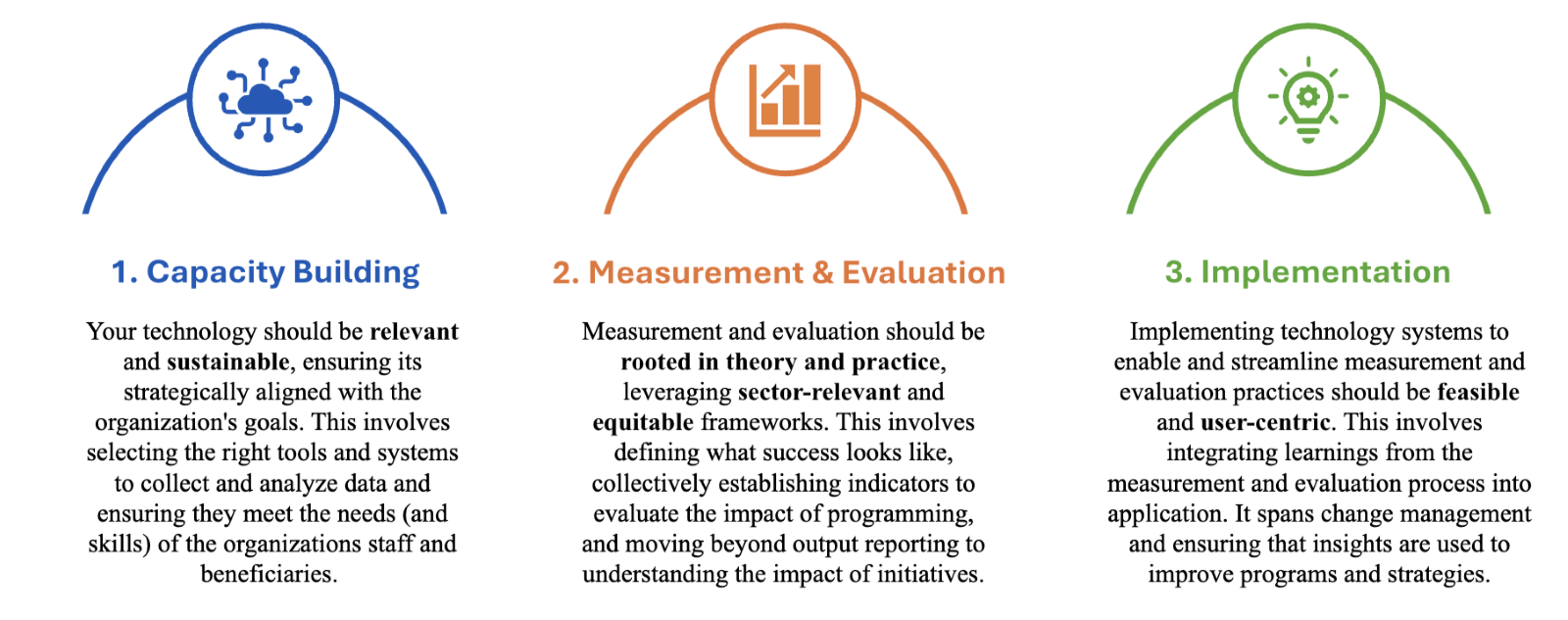Towards Social Impact: Striking the Balance between Nonprofit Capacity Building & Evaluation
"How are we truly influencing change?"
Nonprofit organizations, with their diverse range of activities, share a common mission: to help drive and sustain positive social impact for the betterment of society.
However, practitioners often grapple with understanding what "positive impact" truly means and how to measure it effectively. While success ideally equates to influencing positive social change, the reality of defining and generalizing success across organizations is far more complex.
No two nonprofits operate or serve their communities in precisely the same way. This diversity represents both a challenge in standardizing definitions of social impact and an advantage for nonprofit sector programming: communities and individuals thrive when their needs are addressed in a tailored manner. Historically, nonprofits have focused on evaluating the social impact of their programs to meet reporting requirements, having limited space for to innovate, leveraging evidence from their services. This focus on compliance, driven by lean staffing and reliance on restricted funds, limits their ability to iterate and adapt services with the goal of improving their social influence.
As such, to innovate across programs, nonprofits need flexible funding sources that allow for investments in measurement and technology solutions. With the existence of modern forms of unrestricted funding (e.g. not government grants), organizations can work to prioritize adapting programs to improve their quality, breadth, and depth of their services. Nonprofits that aim to build a learning culture, can adopt governance models that operate as an ecosystem that spans three core tenets:
- Continuous measurement and evaluation (M&E)
- Appropriate capacity building (People and Systems)
- Implementation priorities
This alignment across capacity, evaluation, and implementation tenets is what we define as a social impact. A strategy across your social impact ecosystem can serve as a tool that drives improvements in both programs and operations for nonprofits.
We can start by asking ourselves, "How are we truly influencing change?" and "How do we know this to be true?". It is at this point that we can begin to build consensus around capacity, operations, and programs. This shift towards a social impact-driven culture will require stakeholder buy-in with an adaptable process rooted in a clearly articulated yet iterative social impact strategy. Next we discuss three key tenets of a social impact strategy—capacity, evaluation, and implementation—exploring how they depend on each other and how Tech Impact's offerings support these services to enhance nonprofit social impact.
Three Tenets of a Social Impact Ecosystem
Our approach to social impact measurement aims to equip organizations and collaboratives with the evidence and tools necessary to support program improvement and sector-wide opportunities to scale effective approaches. In our work, we propose a framework consisting of 3 tenets:

But how does our approach towards social impact look in practice? Consider the following case studies from our clients:
Evaluating the Social Impact of a Program
A nonprofit organization sought to evaluate whether their program is helpful for the community. This involves defining what "helpful" means (M&E), selecting the right data system to collect and store data (Technology), and implementing the right tool to analyze data (Implementation). By strategically aligning their infrastructure with their goals, they can more effectively measure and improve their program's impact.
Evaluating Your Organization’s Social Impact
A large nonprofit organization faced challenges in ensuring that their back-office systems and operational technology support the program team’s efforts and outreach. To improve the relationship between operations and programs, they begin to evaluate whether their systems are helping or hindering their efforts, how to centralize their data, and how to ensure that different departments can collaborate effectively (Technology). They then turn their focus towards defining their KPIs in alignment to pre-existing data and their strategic plan (M&E) and finally a real-time dashboard (Implementation). This requires a strategic approach to systems, centralization, and security, while prioritizing improving the organization’s mission.
At Tech Impact, we are your one-stop partners for defining, building capacity and iterating on your organizations social impact. If you’re unsure of where to start, you can:
- Join our Webinar Series From Theory To Practice to learn more about the social impact ecosystem and how to implement these strategies in your organization.
- Take our Impact Measurement Assessment: Evaluate your organization's preparedness for measuring and enhancing social impact.
Connect With The Impact Strategy Team
